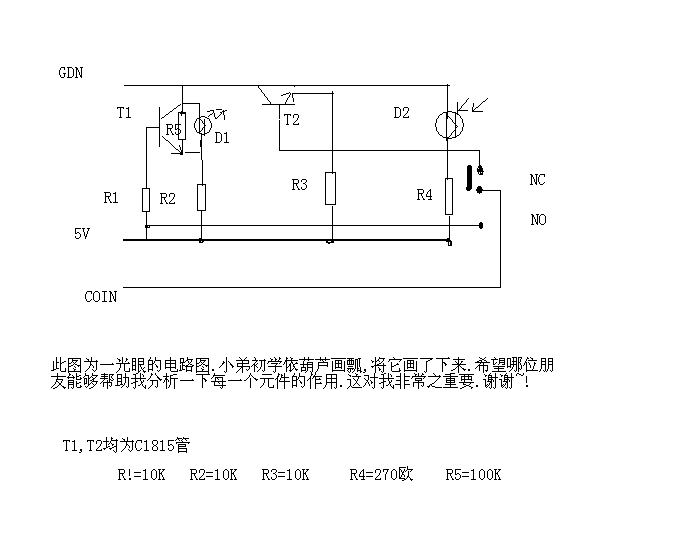
光眼問(wèn)題.謝謝了!

全部回復(fù)(9)
正序查看
倒序查看
@gogo991
是我畫(huà)的不好么?還是有不對(duì)的地方呢!?
HI!Boy, i believe u rush into a completely wrong place.
the bbs is just for power.
optical-eye is preserved patent of Logictech.
the producer said it's used high speed CCD tech. inside.
but i belive it incorporated with coherent optical tech.
u choice a good target,but i can't give u more comment,sorry.
the bbs is just for power.
optical-eye is preserved patent of Logictech.
the producer said it's used high speed CCD tech. inside.
but i belive it incorporated with coherent optical tech.
u choice a good target,but i can't give u more comment,sorry.
0
回復(fù)
@小學(xué)生
HI!Boy,ibelieveurushintoacompletelywrongplace.thebbsisjustforpower.optical-eyeispreservedpatentofLogictech.theproducersaidit'susedhighspeedCCDtech.inside.butibeliveitincorporated withcoherentopticaltech.uchoiceagoodtarget,butican'tgiveumorecomment,sorry.
hi !young boy,please translate these sentences into chinese,because none understand what you said ,there was 5 errors in your sentences.can't you find them?by the way ,what do you do? a student? a teacher?
0
回復(fù)
@ghost
有性格我欣賞!雖然你的圖不對(duì)可大概意思我明白.要改的地方你可從描述中查覺(jué).R4為發(fā)光二極管D2限流電阻,D1為光敏電阻信號(hào)經(jīng)T1放大(R5為D1偏置電阻,R1R2為T1偏置電阻使放大電路能正常工作)后由集電極輸出經(jīng)NO到COIN遮光時(shí)能改變輸出狀態(tài),而T2R3提供一個(gè)低電位經(jīng)集電極輸出到NC端通過(guò)撥位開(kāi)關(guān)的控制可使電路工作在手動(dòng)或遮光控制方示,不知分析的和作者本意有何差別?
帥哥.
你的話上半部分小弟基本理解.
這個(gè)電路圖主要是用于計(jì)數(shù)的.
當(dāng)NC與中間的點(diǎn)短路時(shí).我們視為"常連"COIN與地線視為短路處理.當(dāng)有一物體在二只發(fā)光二極管中間穿過(guò)時(shí).計(jì)數(shù)器計(jì)一數(shù)
當(dāng)NO與中間點(diǎn)短路時(shí).我們視為"常開(kāi)"COIN與地線視為開(kāi)短處理.當(dāng)有一物體在二只發(fā)光二極管中間穿過(guò)時(shí).計(jì)數(shù)器計(jì)一數(shù)
NC與NO只是視二種機(jī)器型號(hào)而用到不同的常連與常開(kāi).
再次想問(wèn)一下.R5為何種偏置電阻?
你的話上半部分小弟基本理解.
這個(gè)電路圖主要是用于計(jì)數(shù)的.
當(dāng)NC與中間的點(diǎn)短路時(shí).我們視為"常連"COIN與地線視為短路處理.當(dāng)有一物體在二只發(fā)光二極管中間穿過(guò)時(shí).計(jì)數(shù)器計(jì)一數(shù)
當(dāng)NO與中間點(diǎn)短路時(shí).我們視為"常開(kāi)"COIN與地線視為開(kāi)短處理.當(dāng)有一物體在二只發(fā)光二極管中間穿過(guò)時(shí).計(jì)數(shù)器計(jì)一數(shù)
NC與NO只是視二種機(jī)器型號(hào)而用到不同的常連與常開(kāi).
再次想問(wèn)一下.R5為何種偏置電阻?
0
回復(fù)
@gogo991
帥哥.你的話上半部分小弟基本理解.這個(gè)電路圖主要是用于計(jì)數(shù)的.當(dāng)NC與中間的點(diǎn)短路時(shí).我們視為"常連"COIN與地線視為短路處理.當(dāng)有一物體在二只發(fā)光二極管中間穿過(guò)時(shí).計(jì)數(shù)器計(jì)一數(shù)當(dāng)NO與中間點(diǎn)短路時(shí).我們視為"常開(kāi)"COIN與地線視為開(kāi)短處理.當(dāng)有一物體在二只發(fā)光二極管中間穿過(guò)時(shí).計(jì)數(shù)器計(jì)一數(shù)NC與NO只是視二種機(jī)器型號(hào)而用到不同的常連與常開(kāi).再次想問(wèn)一下.R5為何種偏置電阻?
這就對(duì)了嗎,你想想沒(méi)有R5,D1怎能輸出高低電平?
0
回復(fù)

